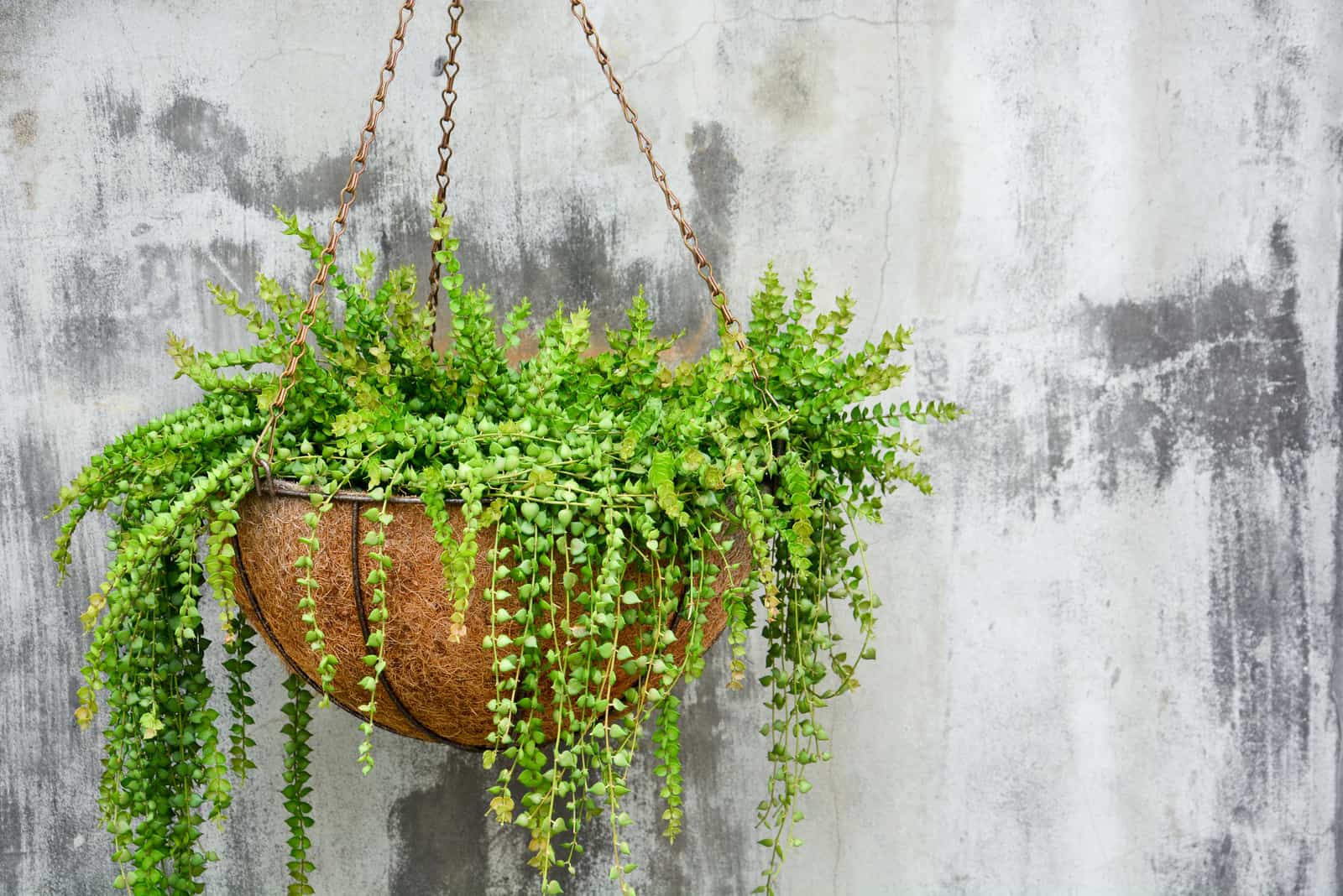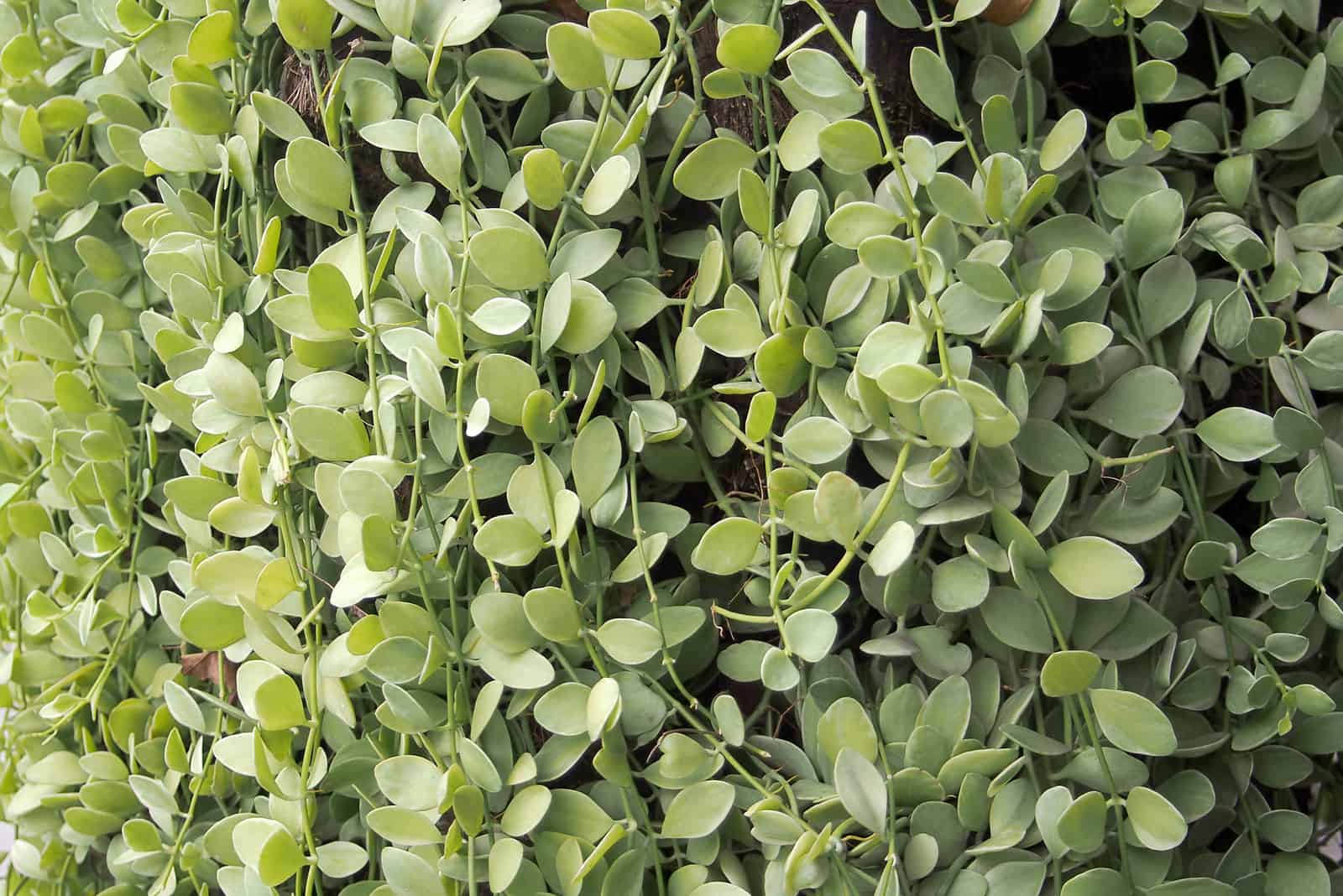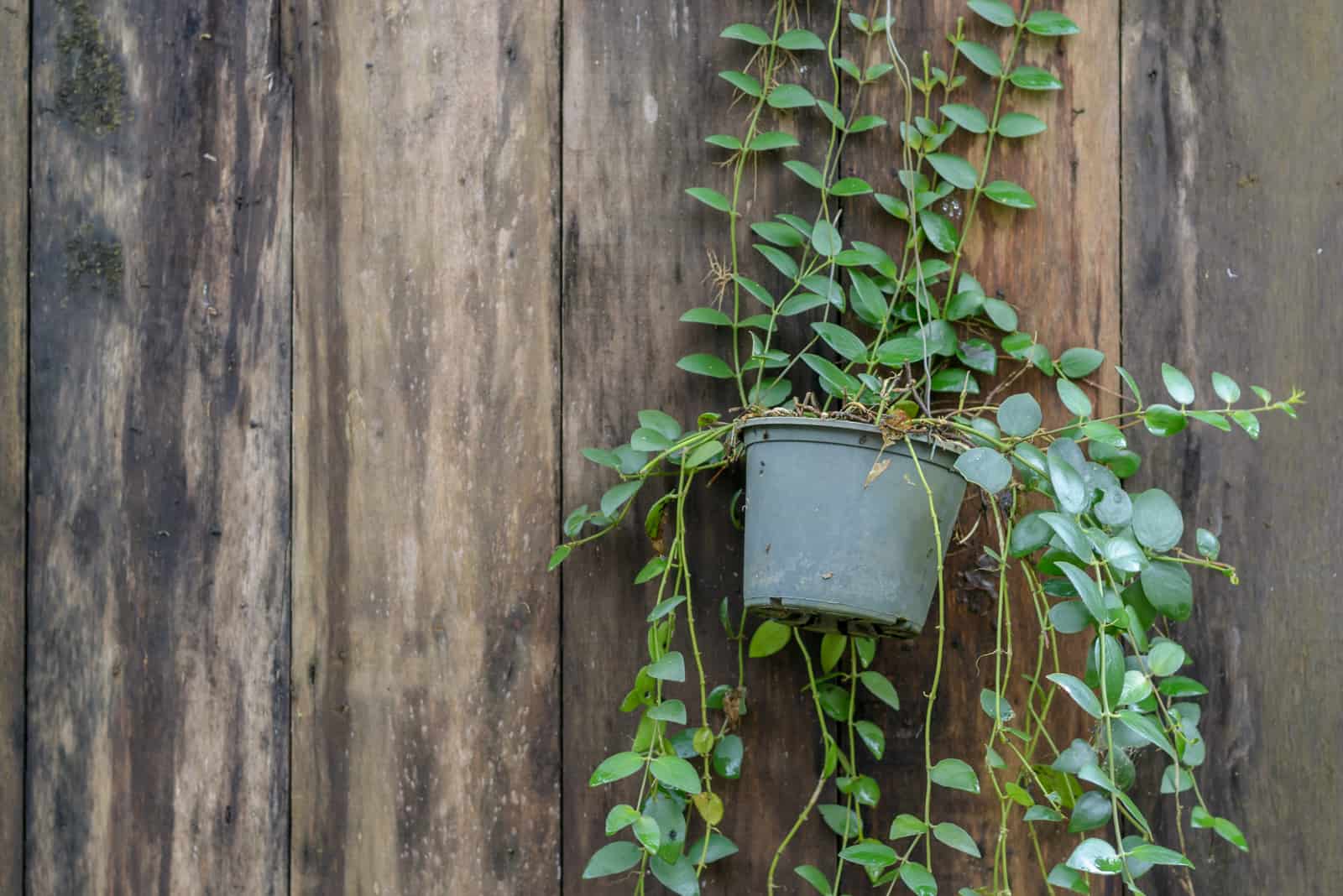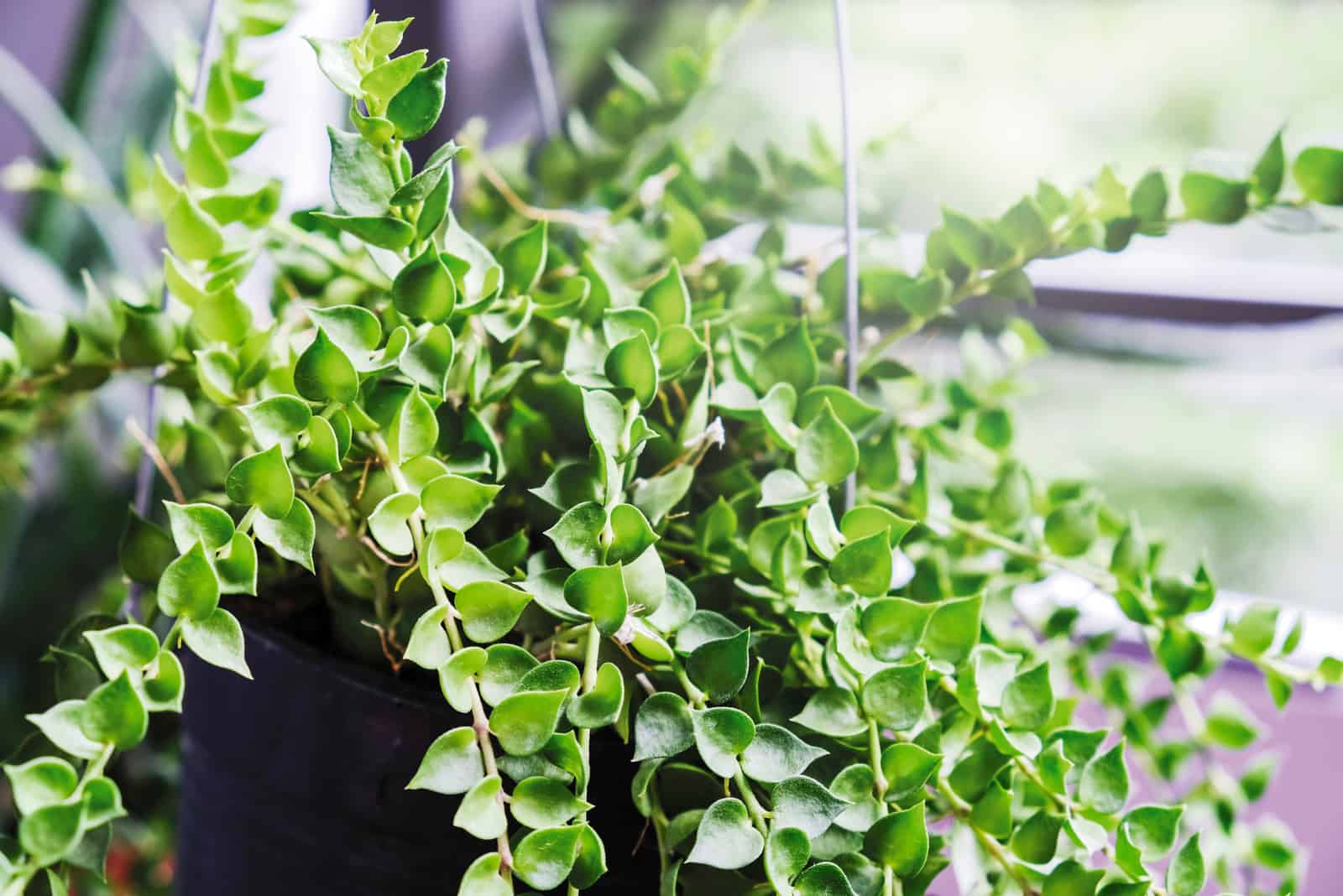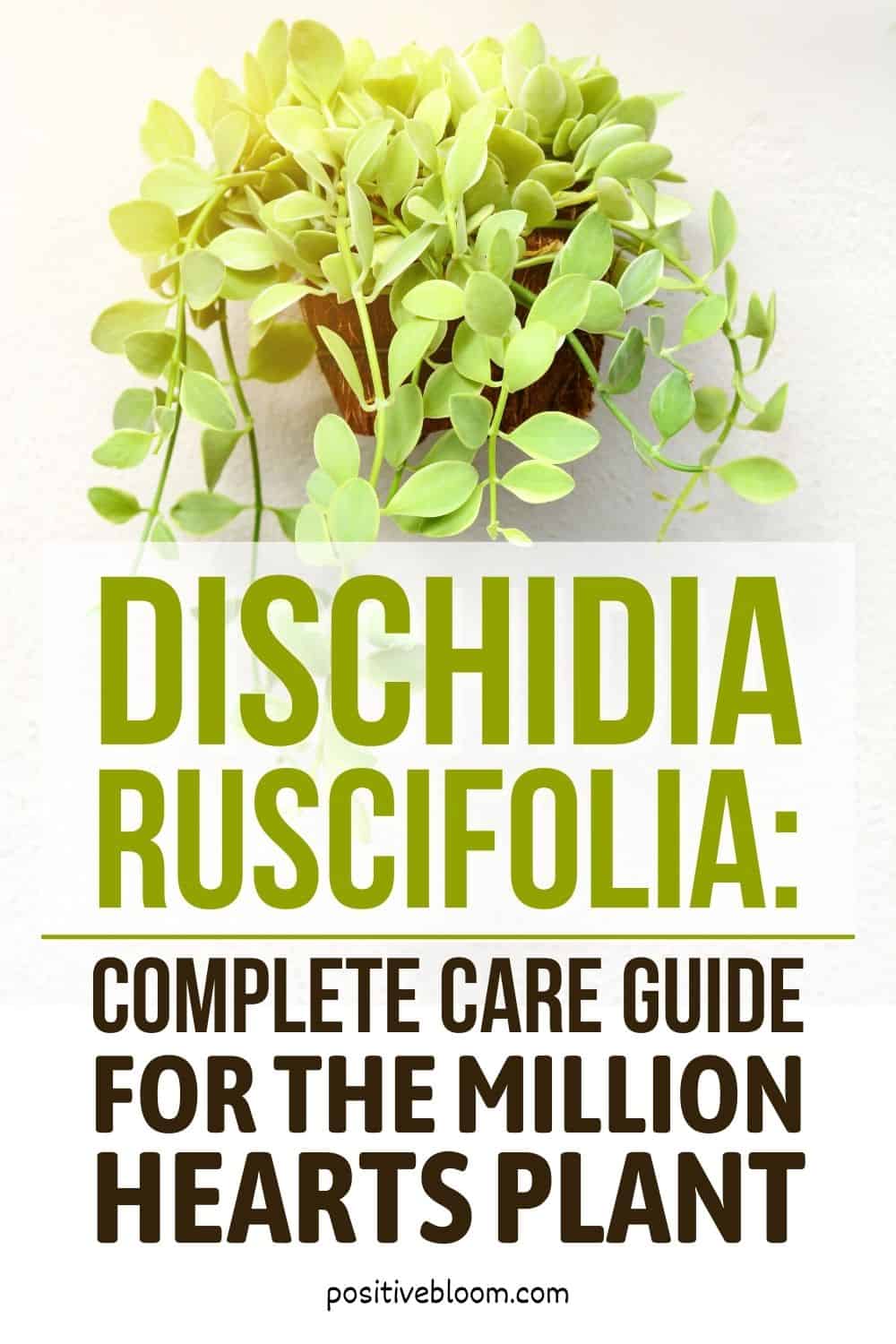If you are looking to expand your indoor plant collection, then you have found the perfect plant right here! Today, we are going to talk about an amazing succulent-like plant that has the ability to trail and looks absolutely magnificent in hanging baskets.
Dischidia Ruscifolia, otherwise known as the Million Hearts plant, is native to the Philippines, however, it has recently become a popular houseplant and can now be found almost anywhere in the world!
Its common name is “Million Hearts” mainly because it produces loads of small and lush green leaves shaped just like hearts!
Read on to find out how to take care of this lovely plant!
What Is A Dischidia Ruscifolia?
The Dischidia Ruscifolia is an epiphytic plant, which means that it grows along the branches of trees or on other plants. The Hoya plant has similar characteristics, which is why these two are often mistaken for one another.
However, the Dischidia plant produces much smaller flowers compared to the large clusters that the Hoya plant produces.
These tiny white flowers are simply adorable, and even though they are pretty small, they are fragrant and make your house smell absolutely amazing!
During the blooming period, little white flowers will grow all over the long green vines. They mix perfectly with the heart-shaped leaves and make the plant look even more aesthetically pleasing.
In the beginning, you will have a cute and small plant. Don’t worry, though, because with proper plant care your plant’s vines can grow up to 3 feet long!
This decorative plant is not hard to take care of, though it should be grown in USDA hardiness zones from 11 to 12 for best results.
For more information, check out the table below:
[table id=165 /]
How To Take Care Of A Dischidia Ruscifolia
If you already have a succulent in your indoor plant collection, then growing Million Hearts plants won’t be an issue for you. Nonetheless, it’s pretty easy to take care of this plant, which is why it’s great for beginner gardeners as well!
Now, let’s get started!
Water Requirements
The Million Hearts plant comes from a place with high humidity, so it is used to absorbing water from moist air. This is why it doesn’t need frequent watering.
You should wait for the soil to completely dry out before watering it. Don’t worry, your plant can tolerate some drought periods — it is related to cacti after all!
It can be hard to tell how often you should water your plant because the water requirements are affected by other factors like temperature and humidity. Therefore, I recommend you always check the soil before watering.
If the soil is completely dried out, then you should water Dischidia. Otherwise, postpone watering for a few days. Puckered foliage is often a sign that the plant is thirsty, so bear that in mind.
It is important to use a proper potting mix that is well-draining as it affects water retention in the soil (check the soil requirements down below).
Don’t worry about getting the leaves wet because they absolutely love it and will absorb water from the surface!
Soil Requirements
Remember that these plants usually grow attached to tree branches in their natural habitat, so they won’t need regular potting soil like any other houseplant.
They prefer growing in a well-draining and loose potting soil that allows air circulation. As these plants are similar to orchids, you can use orchid bark in the potting soil.
However, the best combination would be a potting mix suitable for succulents or cacti mixed with coconut husk or sphagnum moss. You can also add perlite for better drainage.
Make sure that the pot you choose has drainage holes as it’s important to remove excess water and avoid overwatering.
Light Requirements
The Dischidia Ruscifolia is a hanging plant that prefers low light conditions.
It thrives in bright indirect light and should be kept out of direct sunlight, although it can tolerate a few hours of sunlight in the morning.
If you over-expose your plant to the direct sun, the little heart-shaped leaves will burn and turn red, and you don’t want that!
This is especially true if you are growing a Dischidia Ruscifolia Variegata/Variegated Dischidia Ruscifolia, which can easily lose its variegations as a result of improper light conditions.
I keep my Million Hearts plant in a hanging pot near an east-facing window where it gets plenty of filtered light, though you can also use artificial growing lights.
Temperature Requirements
A great care tip when growing any type of plant indoors is to mimic its natural habitat, and this applies to our Dischidia Ruscifolia.
I have never been to the Philippines, but I know that the temperatures are relatively warm, so your Million Hearts plant will thrive if it’s kept between 70 to 85 degrees Fahrenheit.
The lowest temperature it can tolerate is around 40 degrees Fahrenheit, though I wouldn’t suggest you keep it in this environment for too long.
This is why growers tend to keep their Dischidia plant indoors. However, if you live in an area with a warm climate you can keep it outdoors as well, just make sure to protect it from direct sunlight.
Humidity Requirements
As it likes absorbing moisture from the air, there is no better way to keep this plant happy and healthy than by increasing humidity levels!
The Dischidia Ruscifolia is an exception because most succulents don’t like high humidity levels.
Ideal humidity levels for this plant would be from 40% to 90%. Whichever level you choose, the plant will adjust to it and grow normally.
You could make a pebble tray to provide your plant with enough moisture to keep it healthy and glowing. All you have to do is put some pebbles in a tray, fill it with water, and keep your plant on top of it.
As the water evaporates, it will be absorbed by the leaves.
Fertilizing Requirements
This plant is not a heavy feeder, so it won’t need to be fertilized that often.
You can use a balanced liquid fertilizer and apply it only during the growing season. For this plant, that’s spring and summer.
This will encourage new growth and your beloved plant will shower you with love by producing more of its glorious heart-shaped leaves!
Repotting
The Dischidia plant should be repotted as soon as you see roots coming out of the drainage holes. This usually means that your plant is rootbound and needs more space for growth and development!
Just buy a slightly larger pot than your current one and fill it half way with a suitable potting soil. Make a hole in the center of the soil to place the plant.
After that, add the rest of the soil and press down gently around the base of the plant to make it more compact. Continue following regular care instructions by watering it when the soil dries out and keeping it out of direct sunlight.
Pruning
You will have to prune your Million Hearts plant when needed, which is when the vines get too long and the plant loses its regular shape.
To promote new growth and keep the plant looking neat and tidy, cut the stems above the point where the leaves branch. Even if you don’t cut it at this specific site, don’t worry too much because your plant will keep growing and developing regardless!
Propagation
After growing your first Million Hearts plant, you will want as many Million hearts plant off-shoots as possible!
Propagation is beginner gardener friendly, so you will be able to grow a brand new plant in no time!
This can be done by removing the bottom leaves from the stems and putting them in water. You can also do it with stem cuttings.
If you are using water, make sure to change it regularly. Once you notice that the roots have developed, then it’s time for your little plant to grow in soil!
Make sure that you use proper potting soil and continue with regular plant care.
For more information about Dischidia Ruscifolia plant care, check out this video:
Common Dischidia Ruscifolia Problems
The Dischidia plant is quite hardy and can grow in various conditions. It isn’t susceptible to numerous pests like most other plants, which is why it is perfect for gardening newbies!
You should keep an eye out for mealybugs, though, as they are a common pest that absolutely love munching on the leaves of this plant.
Common problems are often associated with inadequate watering. For example, if you overwater this plant it will likely lead to root rot.
Root rot is a fungal infection that can kill your plant. If you notice yellow leaves or the soil begins to smell bad, then you are probably dealing with root rot.
It is important to take action immediately in order to save your plant. Repotting the plant into a new pot and soil is the first step, and removing the mushy and decaying roots is also very important.
Yellow foliage can also indicate underwatering. Even though your plant is related to cacti, it still needs to be regularly watered! If you leave your plant without water for too long, yellow hearts will start appearing all over the vines!
To save your plant, soak it thoroughly before proceeding with the regular watering schedule.
Frequently Asked Questions
1. Is the Dischidia an indoor plant?
This depends on the climate in your region. If you live in an area with a warm climate (such as the Philippines), then it’s probably fine to keep your Dischidia plant outdoors. Just keep it out of direct sunlight!
However, in most cases this plant is grown as a decorative houseplant because long vines with millions of leaves are a great addition to any home!
2. How do you take care of a Dischidia Ruscifolia?
First, you will have to provide it with well-draining and loose potting soil. You can either use an orchid bark or universal succulent potting soil mixed with sphagnum moss and perlite.
Keep your plant in bright indirect light for about 12 hours a day.
The temperature should be kept around 70 degrees Fahrenheit, and humidity somewhere between 40% to 90%. Use a balanced liquid fertilizer every now and then to encourage new growth and development.
Water the plant when the soil dries out, and make sure that the pot has drainage holes at the bottom.
3. What are the Dischidia Ruscifolia’s characteristics?
This plant is absolutely stunning! It produces long vines with plenty of heart-shaped leaves, which is why it is referred to as the Million Hearts plant.
It is often grown in a hanging pot from which the beautiful long vines fall, and is even more aesthetically pleasing once the tiny white flowers start growing.
Not only do these flowers make the plant look more delightful, but they also have a mesmerizing fragrance that will spread around the room. Seriously, I’m always so excited for the blooming period because they smell so nice and refreshing!
These vines can grow to about 3 feet long, although you can prune them and keep them in a certain shape and length if you wish.
In their natural habitat, these plants grow as an epiphyte, which means that they grow on other plants or trees. But don’t worry, you won’t have to provide them with tree branches indoors.
Just keep them in loose soil and they will grow happy and healthy!
4. What is causing my Dischidia Ruscifolia to yellow?
In most cases, yellowing leaves indicates that there is some issue with watering. Either you are watering the plant too much or not enough.
I am sure you can figure out which by yourself, however, the obvious sign of overwatering is soggy soil, so if you can’t recall whether you’ve been watering your plant, check the soil to get your answer!
If it’s wet, then the issue is probably overwatering. If you notice the soil is kind of smelly, then you are probably dealing with root rot. In this case, you should repot your plant immediately!
If the soil is dry, then you should soak the plant and continue with your regular watering schedule.
To Sum Up
The Dischidia Ruscifolia is a lovely plant that everyone should consider buying (especially if you are a gardening newbie!).
It has beautiful long vines with loads of heart-shaped leaves that get even prettier during the blooming season! The lovely white flowers also have a mesmerizing fragrance that will serve you as a free air freshener!
You won’t have to worry about pests invading this plant because it’s resistant to most of them. While mealybugs may sometimes affect your plant, you can get rid of them easily!
Inadequate watering is another common issue with this plant, so you must always check the soil before watering to avoid any issues.
Another great thing about this plant is that you won’t need to spend money on lots of fertilizers, as a liquid balanced fertilizer applied once in a while will work perfectly fine!
Until next time!
Like this post? Share or pin it for later!

